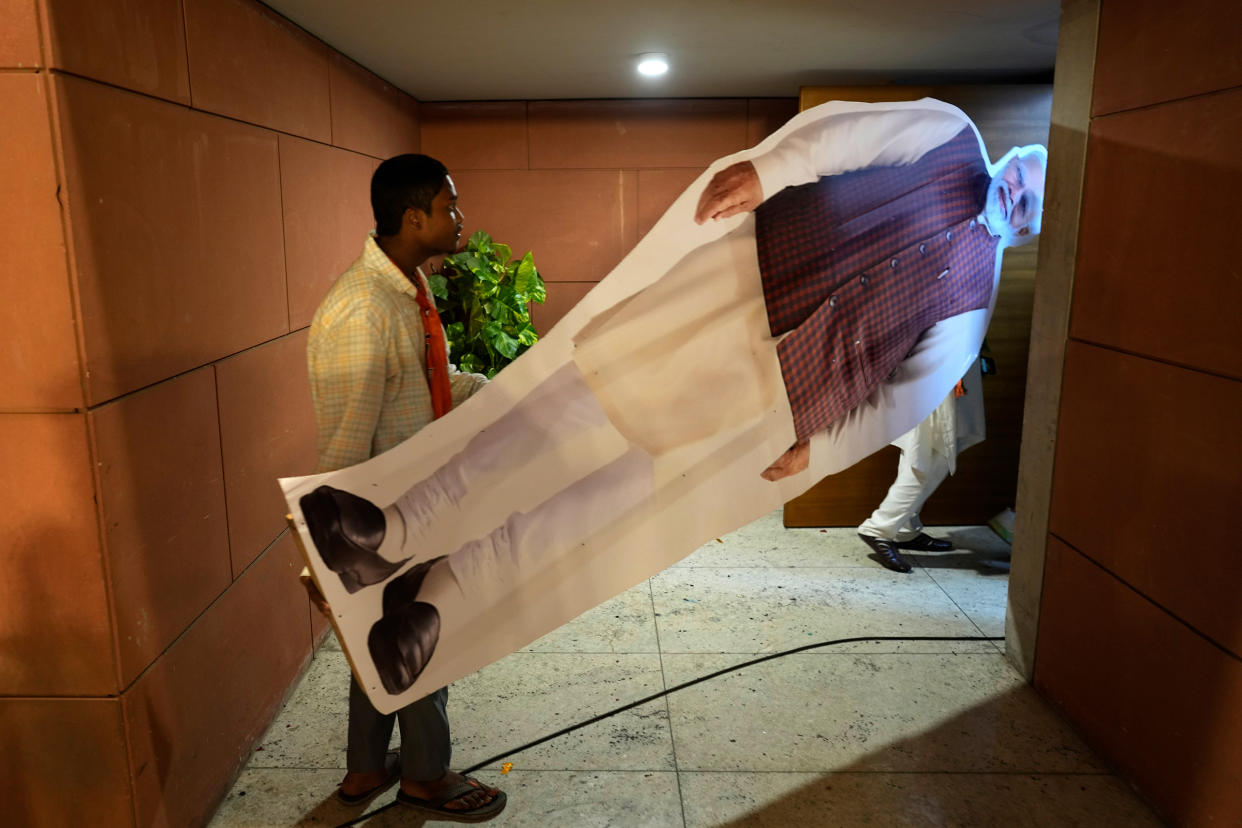Modi's Unraveling Has Begun
There is nothing surprising about a Prime Minister seeking a third consecutive term returning to power with a weakened mandate. Voter fatigue and anti-incumbency factors can erode margins. That Narendra Modi’s Bharatiya Janata Party is projected to win 240 parliamentary seats (out of 543) in India, though short of a majority, would be considered a good outcome in most other settings. The BJP’s vote share fell but it has still won more seats than the entire opposition I.N.D.I.A. alliance put together. And yet, an opposition that has struggled against the electoral might of Modi’s BJP’s since he first took office in 2014 is rightly celebrating, seeing hopes of future victories even as it is defeated. Modi’s victory is Pyrrhic; the 73-year-old’s decline now seems inevitable.
That may be why Modi’s post-election speech sounded subdued. He had made the campaign all about him, as if it was a personal referendum. He toured across the country, and the BJP had a triumphalist (and now hubristic) slogan, Ab ki baar, charso paar (“This time, beyond 400”), which referred to his goal of winning a supermajority in parliament. It’s a prospect that alarmed many, who feared Modi might introduce amendments to the constitution, changing India’s secular character.
In the end, voters chose otherwise. Many BJP leaders were defeated, and the party lost support in key states such as Maharashtra. Worse, given the BJP’s openly Hindu nationalist campaign, it lost Faizabad, the constituency where Modi inaugurated a controversial grand temple in Ayodhya in January this year, on the ruins of the Babri Masjid. His margin of victory in his own constituency, Varanasi, dropped sharply; Rahul Gandhi, the Congress Party leader Modi has repeatedly ridiculed, won both his seats handsomely.
Read More: The Message the Ram Temple Sends Muslims Like Me

All of this has major consequences for India and its voters. To be sure, Modi’s personal popularity has not disappeared: 75% of Indians approved of him in a February poll. But for a leader who rules by projecting invincibility and fear, who claims credit for almost anything that happens in India, the blame for anything that goes wrong must also rest with him. Instead of campaigning on how he would tackle challenges—such as rising inequality, growing hunger among the poor, and rising temperatures and its worst effects—he stoked fears among voters. That included claiming that the opposition would take away Indians’ wealth and distribute it to “infiltrators” (coded language for Muslims), and suggesting he was divinely chosen to lead India.
The domestic agenda is daunting, and it includes precisely the issues Modi did not address during the campaign. Governing a parliamentary coalition is an art, which requires compromises and respecting alliance partners. As a septuagenarian, it is difficult to imagine Modi navigating that well. Modi has antagonized many people across a wide spectrum over the years—not least by threatening rivals with raids and jailing opposition politicians. Without a majority in parliament, he is vulnerable like no previous point. Indian politics has suddenly become more interesting.

Read More: What Modi 3.0 Means for the World
To his credit, Modi has pushed major investments in infrastructure over the past decade. More highways, toll roads, and bridges have been built. Faster trains are being made. There is an aviation boom and airports are getting an upgrade. More malls are emerging in cities. There are more universities and hospitals. And the metro network has grown. But many of these projects improve the lives of the wealthy, the upper-middle class, and the aspirational middle class. While India has 1.4 billion people, the percentage of Indians who can afford a modern middle class lifestyle is pitifully small. At 432 million, the Indian middle class appears bigger than the U.S. population. But the threshold of high income for that estimate begins at a mere salary of $17 a day.
Modi's domestic priorities, then, will need to focus on poorer Indians—creating jobs, increasing access to education, rejuvenating farms, tackling the climate crisis, and making it easier for people to run businesses.
As Modi begins what may be his final term as Prime Minister on June 8, he will have to move away from his baser instincts, which are to divide people with contentious policies driven by religious and cultural practices and maintain a personality cult around him. Whether he is capable of that shift will decide whether India will be a happy place, or continue to be affected by strife.
Contact us at letters@time.com.
